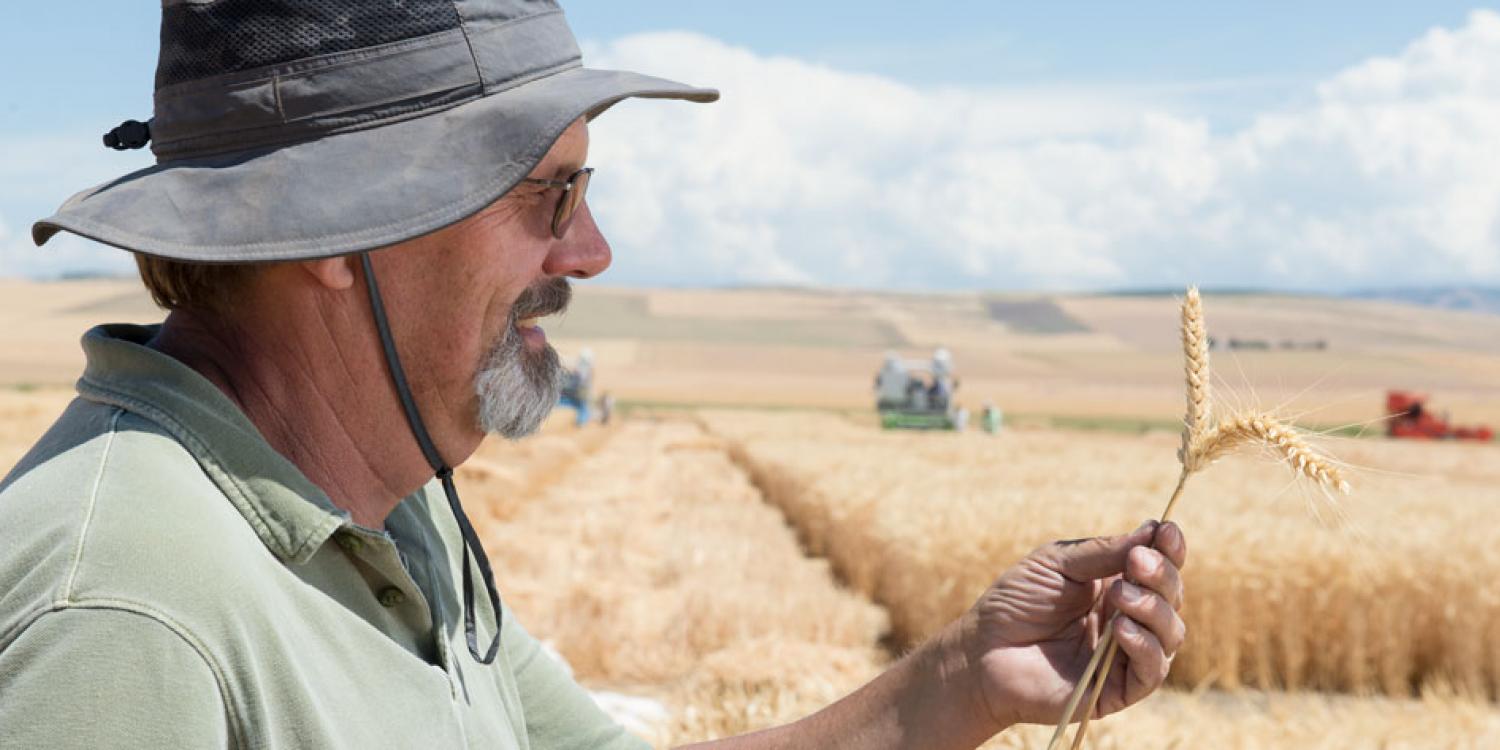
With the leading wheat varieties in Oregon and Washington, Oregon State University's Wheat Breeding Program has a long-standing reputation for success. Each year, OSU tests more than 40,000 genetically distinct lines specifically for the Pacific Northwest. With wheat breeding, quality testing, and Extension outreach, the program is are uniquely equipped to meet the needs of the farmer, the miller and the baker.
Common winter wheat diseases in Oregon include soilborne wheat mosaic virus and stripe rust – major problems for an Oregon crop with an estimated value of production at $276 million in 2020, according to the Oregon Department of Agriculture. Breeding disease resistance into the plants reduces or eliminates the amount of chemical inputs farmers need to spray on diseased crops. However, the viruses and fungi mutate season after season, and act differently in different climates.
Bob Zemetra, retired OSU professor of plant breeding and genetics, characterizes wheat breeding as an “arms race,” working with test plots across the state to constantly out-gun mutating pathogens. He and his colleagues are so successful that their varieties are planted by farmers throughout Oregon, Washington and Idaho. OSU stock is used to strengthen breeding lines across the country. Oklahoma scientists, for example, are currently using OSU stock to breed stripe rust resistance into their lines.
OSU continues to introduce new varieties to help farmers stay ahead of disease. OSU Extension also produced a field guide to help growers diagnose common wheat maladies of the Pacific Northwest.